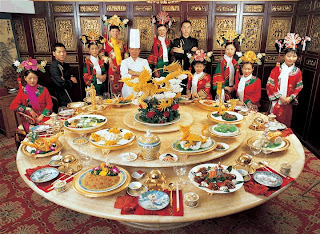In recent years, China has become one of the most popular sources of just about any cuisine. This paved way for Chinese food to be renowned across the globe particularly countries like United States, UK, Australia and Western Europe. What many westerners usually do is they tend to group the dishes all together despite its regional variation. Different traditions have developed around different areas in China and this is mainly due to climatic conditions as well as ethnic make up. As China continues influencing the West, it worked as a win-win situation on both sides. This brought the establishment of various fast food chains along the streets of China encouraging an even freer economy.
Despite the differences of each region, what keeps them bonded together is the idea that meals should be kept pleasing to the eye, healthily balanced as well as contain the best and freshest ingredients available. As a tradition, dishes are served along with a hot tea or hot water since this is believed to aid digestion. However, beers and soft drinks have taken over and has become people's favorite in recent years. Meat like chicken and pork has become in demand and has been a huge part of working people's daily diet. Also, beef is consumed and comes in very thin slices. Vegetables, as always, are a mainstay in many Chinese cuisines and it comes in a wide array of choices.
One of the most in demand menu choices is the Sweet and Sour Pork. Dishes that contain beef as the main ingredient are usually cooked with noodles together with black bean sauce or cashews. Recipes that make use of chicken include Lemon Chicken, Honey Chili Chicken and also Chicken with Lychees. In general, Chinese food dishes are typically served accompanied with bowls of rice or noodles. Vegetables are spared from being overcooked to make it taste crispy and fresh. The most common vegetables being used are green beans, eggplant, zucchini, mung bean sprouts and mushrooms. Also, included are Chinese cabbage, Chinese broccoli as well as bok choy.
Coastal areas in China have their own traditional cuisine with seafood as the main ingredient. This includes both freshwater as well as deep-sea fish dishes. Prawns, crab, squid, shark fin and scallops are all favorite ingredients.
Chinese food dishes are never complete without a steaming hot bowl of soup. It is especially welcome during cold weather especially Chinese winters and is a great way of using up leftovers. Stock, as it is called, is often made out of meat, chicken or vegetables. Sweet Corn Soup has become a favorite among Westerners the same as Szechwan Soup, which is made from pork, ham, mushrooms, red pepper, prawns as well as chicken stock.
When talking about cuisines per region, one of the most internationally in-demand is the Cantonese cuisine. These dishes are typically made up of meat or chicken but also include Shark Fin Soup and Steamed Sea Bass. Generally, Cantonese cooks prefer to stir fry, saute, steam or deep fry. What makes Chinese food unique from other kind of dishes as it make use of soy sauce, rice vinegar or oyster sauce instead of spices to give flavor.
Are you looking for the best place to dine and enjoy the sumptuous dishes of Chinese food? If you're just around the corners of Southern California, watched this video I just posted and learn about the best Chinese Food Resaurant in Riverside offering you a fine dining experience at an affordable price.
Article Source: http://EzineArticles.com/4116926

